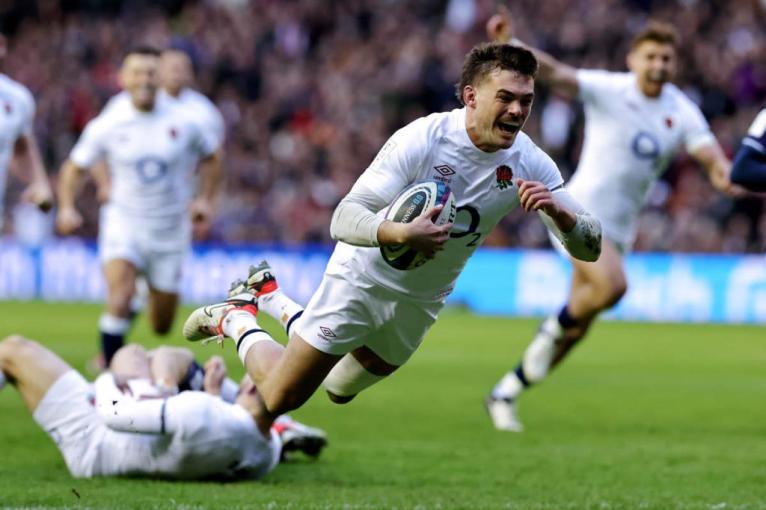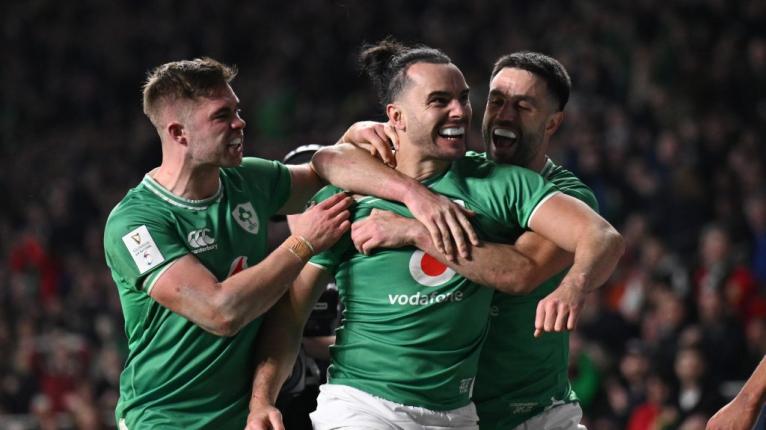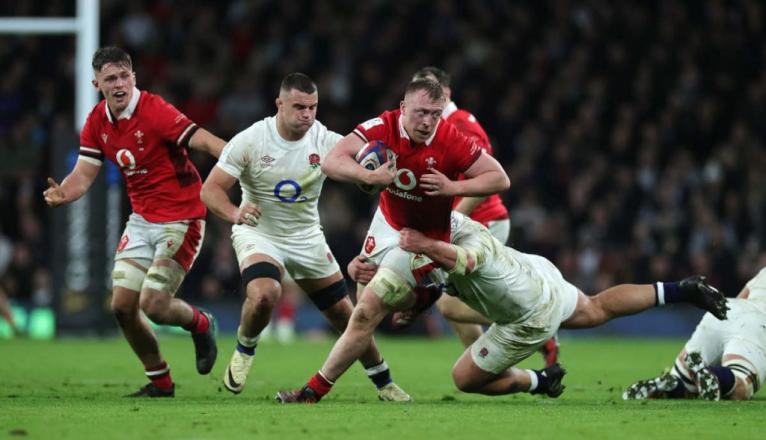Who impressed and who fell short of expectations? Whose stats backed up what we saw in the flesh, and who was influential without much fanfare? As another bumper Six Nations grinds to a halt, the European elite have much to ponder.
Ireland can savour back-to-back championships but not the second-straight Slam they chased. England found their attacking snarl at last, but were crestfallen late in Lyon. France began the tournament in a confused stupor and ended it looking much more like their old, flamboyant selves.
Italy created history, their swaggering youngsters consigning a horrific World Cup to the archives and delivering their best ever Six Nations. Scotland endured another oscillating year of coulda-woulda-shouldas and Wales’ wooden spoon was the product of mass disruption in their domestic game and a slew of Test rookies being tossed into the melting pot.
Here, RugbyPass runs the numbers and selects its team of the championship.
Have your say in the comments below, but remember – it’s just a bit of fun. Let’s get stuck in…
15. George Furbank
A crucial part of England’s revival as an attacking force. He lacks the soaring dominance of Freddie Steward in the air, but on the counter, Furbank offers superior spark and creativity befitting a player who occasionally steps in at 10 for Saints. Though he started only three games, and was injured early against France, his running from deep unsettled Ireland and he scored a brilliant first-phase try at Murrayfield. After a bruising start to his international career in 2020, this championship will have been a sweet return to the Test arena.

Elsewhere, Hugo Keenan is pure class, young Welshman Cam Winnett battled admirably in trying circumstances, while Thomas Ramos flitted between full-back and fly-half and was a typically sharp-shooting goalkicker in both positions.
14. Monty Ioane
A constant threat in Gonzalo Quesada’s hugely impressive Azzurri outfit. Ioane ran for close to 400m, made seven line breaks and eight offloads, beaten in the latter two categories by only Damian Penaud. He played every minute of Italy’s championship and plundered big tries against England and Wales.
After a soporific start to the campaign, Penaud rediscovered his form while Calvin Nash took seamlessly to the Six Nations berth vacated by Mack Hansen.
13. Juan Ignacio Brex
An iron fist in a velvet glove. In modern rugby parlance, Brex is a ‘triple threat’ centre who can run, kick and pass beautifully. He can do pretty much anything which might be asked of an international 13 to an exceptional standard. Brex’s distribution and decision-making in traffic is superb, bringing leadership to what is still a youthful backline. Finished the Six Nations with richly deserved back-to-back player of the match awards.
Huw Jones impressed in the Scottish attack scoring a sumptuous individual try against Ireland and despite a couple of hairy moments in defence, Gael Fickou drove France forward, finishing a dashing move with aplomb in Lyon.
12. Bundee Aki
A competitive position given Tommaso Menoncello’s eye-catching dynamism for Italy, and the thunderous stuff Ollie Lawrence produced in England’s best matches.
It feels harsh to omit either Italian centre, but Aki’s sustained excellence, a month shy of his 34th birthday, is truly outstanding. Carried his blistering World Cup form into the spring and set about smithereening more defences, and shattering more gain lines. He racked up nearly 400m from his 50 charges and earned four line breaks.
11. James Lowe
His levels of consistency are tremendous. Lowe remains one of the best finishers in Europe and that siege gun left boot is a prized asset for Andy Farrell – only Finn Russell kicked for more metres.

Lowe ran in four tries, made seven line breaks and gobbled up more metres with ball in hand than any other player, close to 100m per game. Another Six Nations to savour for the much-loved wing.
Duhan van der Merwe dismantled Wales and England but his influence waned later in the tournament as he was starved of ball.
10. Jack Crowley
Stepped into the boots of an icon and quarterbacked his team to another championship. Crowley is young and learning, but this was an impressive debut campaign running what for so long was Johnny Sexton’s show. Has a work rate to rival most leafcutter ants and brings rare physicality in the tackle and even at the ruck to the fly-half position.
Began the Six Nations with a terrific game-managing display in Marseille, and despite a scrappy team performance against Scotland, finished it with a winner’s medal around his neck.
George Ford was sublime in Lyon, showing wit and guile, while Paolo Garbisi was at the forefront of Italy’s rise.
9. Jamison Gibson-Park
Nolann Le Garrec helped transform the French attack in the final two matches, but Gibson-Park’s brilliance across the whole Six Nations nudges him ahead of the young Racing man.
There’s a potent ruthlessness to Gibson-Park’s style – swift, thrusting and deadly, whipping the supremely effective Irish attackers around the pitch, picking options and setting the pulse. Finished with a tournament-best three try assists. Even did a solid turn on the wing when an injury spree and a six-two bench left Ireland scrambling for backs at Twickenham.
1. Andrew Porter
Did nothing to damage his reputation as a destructive force around the paddock, placing in the top five for ruck cleans, winning a couple of breakdown turnovers and carrying, on average, more than seven times per match. His close-quarter try against Scotland was key to sealing the title and he had the visitors’ reverse lights blinking furiously at scrum time, an area in which his technique has drawn fire in the past.
Human whisky barrel Pierre Schoeman and the ultra-mobile Danilo Fischetti were workmanlike.
2. Dan Sheehan
Comprehensively redefining the role of the hooker season by season. His irrepressible form shows little sign of abating, even if there were a couple of shaky lineouts at the denouement.
A joint-championship best five tries, more carries than any front-row, and the pace and power in the wide channels which have typified his searing ascent in green.
Jamie George skippered England magnificently through huge personal grief.
3. Uini Atonio
Announced his retirement after the World Cup anguish, but swiftly reversed his decision and how Fabien Galthie will be thrilled to have him involved. The size of a water buffalo, Atonio is a veritable anchor at scrum time and gives France important go-forward with his bustling one-out carries.

Evergreen Dan Cole deserves a mention, as does Zander Fagerson, Scotland’s most important forward, who made 22 tackles in Dublin.
4. Dafydd Jenkins
Wales are not so much in transition as complete upheaval, and Warren Gatland might have longed for an experienced hand to steer the kids through the turbulence. Yet Jenkins, just 21, has been a totemic presence. Rob Baxter saw his vast leadership potential at Exeter and gave him the captaincy earlier this season. He is Wales’ youngest skipper since the iconic Gareth Edwards some fifty years ago. He’s got a V8 engine, resourcing a whopping 144 attacking rucks, and making more tackles than every player bar Michele Lamaro. His growing reputation has been burnished further. Wales can build a pack around him for the next dozen years.
Joe McCarthy was a brilliantly physical presence in the Irish engine room.
5. Tadhg Beirne
Such is his quality, Beirne’s contributions to another title might have flown a little under the radar. He is everywhere for Andy Farrell’s champions – punishing carries, important tackles and breakdown menace in spades. His ability to anticipate what might happen, and where he needs to be, is compelling. Nobody stole more lineouts than Beirne.
Ollie Chessum was effective at lock and on the blindside flank.
6. Charles Ollivon
In an oscillating French team, Ollivon provided moments of real class and leadership and his output seldom dipped. A shrewd back-row and majestic, loping carrier, he took his try against Italy well, made one searing break through the English defence and later, while being hit ball and all, freed his hands neatly to send Leo Barre home. Defensively astute in the tackle and at the breakdown, the thoroughbred was a beacon of positivity for Galthie.
Alex Mann came of age in the Welsh back-row in the early rounds and Andy Christie was a force for Scotland, especially in the final game.
7. Tommy Reffell
Constantly wielding his pick and shovel and pointing the way for some of his callow teammates.

Hit more rucks and won more breakdown pilfers than any other player. Particularly immense in the second-round loss to England. A truculent, defiant, snarling tearaway.
Sam Underhill was, once more, a human scythe.
8. Ben Earl
Backed up his sensational World Cup with a blockbuster Six Nations. The Saracens wrecking ball made 15 more carries than any other player and ran for 143m more than any other forward.
Only two wings, Lowe and Penaud, outstripped his return of 418m. Earl beat 24 defenders, the most of any forward, and scored two tries. These massive numbers underpin Earl’s obvious lustre and increasing importance to the English cause.



Comments
Join free and tell us what you really think!
Sign up for free